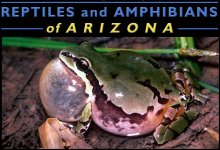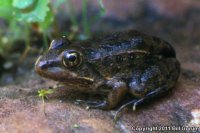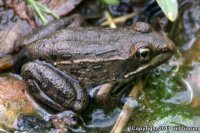| Range: |
 |
| Other Names: |
|
| Description: |
The Lowland Leopard Frog is a relatively small leopard frog - maximum length is about 3.4 inches. Adult males lack prominent vocal sacs. This is typically a brown frog, although some are green, particularly on the head. There is often a yellowish wash to the groin area. Compared to other leopard frogs, the tadpoles are relatively dark, mottled, and stocky. Tadpoles grow to > 3 inches. |
| Similar Species: |
It is distinguished from other leopard frogs by a combination of characters, including dorsolateral folds that are broken and inset towards the rear, a dark brown and tight reticulate pattern on the rear of the thigh, and usually no spots on the snout. They are similar to Chiricahua Leopard Frog tadpoles, but browner with a shallower tail. |
| Habitat: |
This frog currently or historically inhabited big rivers, streams, cienegas, cattle tanks, agricultural canals and ditches, mine adits, and other aquatic systems to almost 6,000 feet, and from Sonoran Desertscrub into pinyon-juniper woodland. Lowland leopard frogs do well in unregulated streams that are subject to periodic floods. |
| Behavior: |
Can be found active day or night, although they are easier to find and observe at night with a headlamp or flashlight. Moves overland and along drainages during summer monsoons. Active nearly year-round in the desert. |
| Hibernation: |
|
| Reproduction: |
Breeds primarily from January through April, and again in late summer or early fall. Egg masses are laid in shallow water and are attached to vegetation, bedrock, or gravel. Tadpoles take 3-9 months to metamorphose, and some overwinter. Adult males give a distinctive advertisement call consisting of a series of chuckles that are not very loud and are similar to that of the Plains and relict leopard frogs. |
| Diet: |
The lowland leopard frog presumably feeds upon a wide variety of invertebrates as well as some small vertebrates. |
Adapted from account on reptilesofaz.org
Sources:


|











